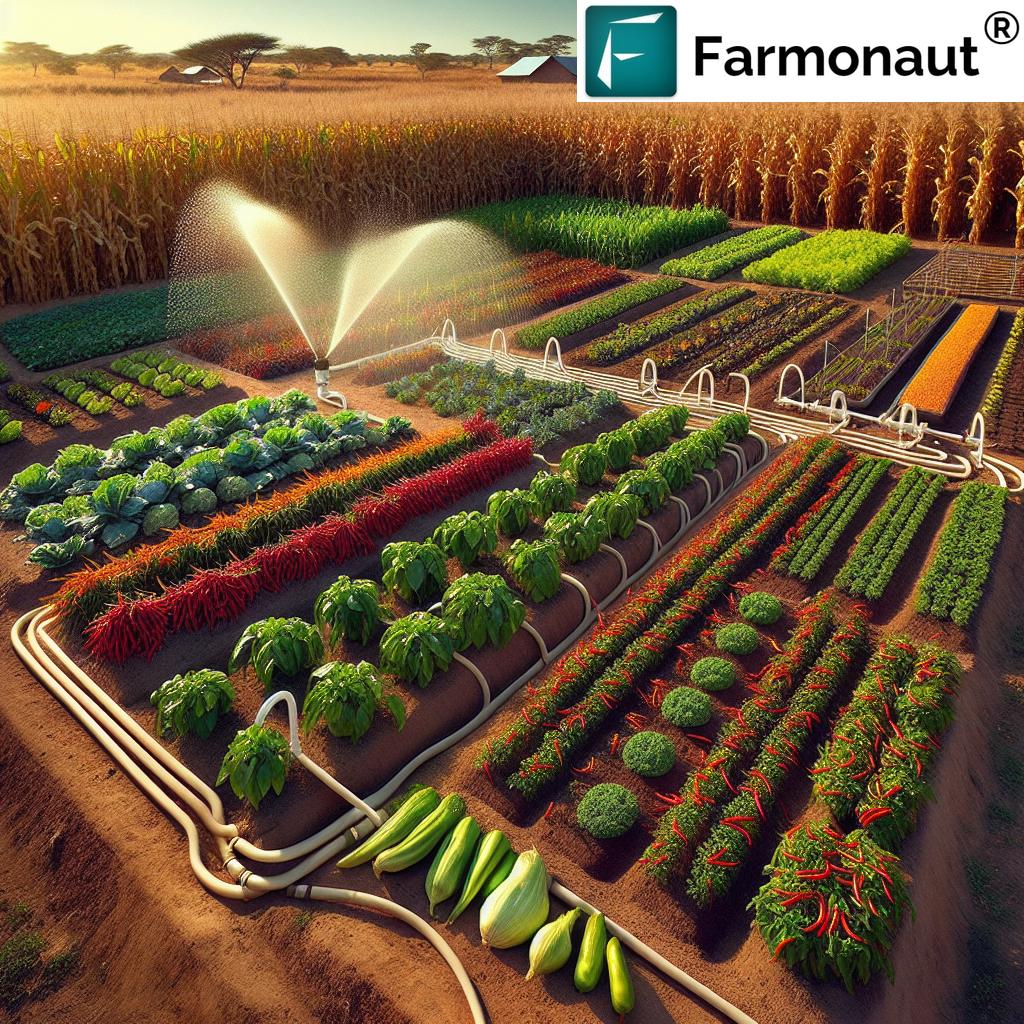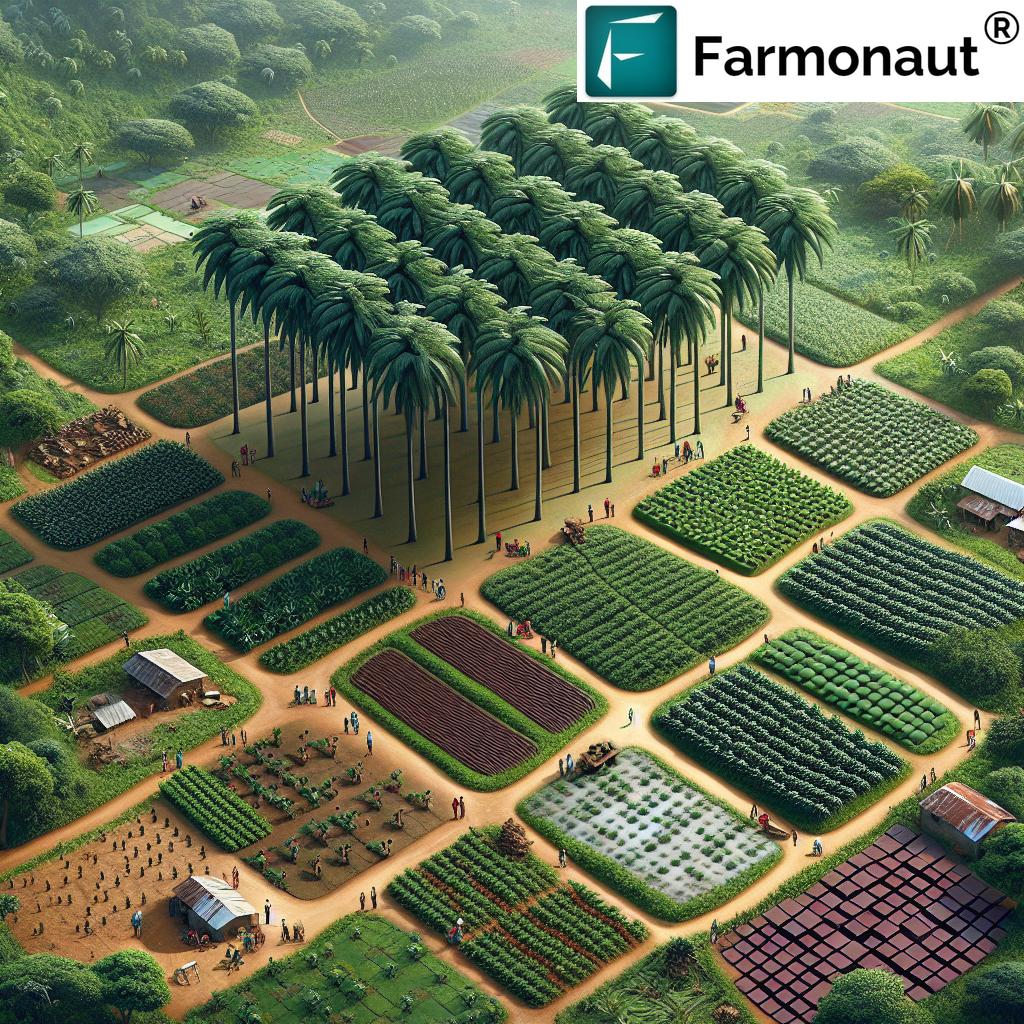Transforming Liberia’s Agriculture: Key Insights on Modernization, Food Security, and Economic Growth

“Liberia’s agriculture relies heavily on rain-fed farming, with limited irrigation systems used across the country’s small farms.”
We are witnessing a critical juncture in Liberia’s agricultural landscape, where the fusion of tradition and innovation holds the key to unlocking unprecedented growth and food security. As we delve into the findings of the recent report from the Liberia Institute of Statistics and Geo-Information Services (LISGIS), we uncover a tapestry of challenges and opportunities that define the nation’s agricultural sector. This comprehensive analysis not only sheds light on Liberia’s current agricultural practices but also illuminates the path toward a more sustainable and prosperous future.
The Current State of Liberian Agriculture: A Snapshot
Liberia’s agricultural sector stands at a crossroads, balancing between time-honored practices and the pressing need for modernization. The LISGIS report paints a vivid picture of a nation where agriculture forms the backbone of rural livelihoods, yet faces significant hurdles in meeting the country’s food security needs and economic aspirations.
- Agricultural Households: Approximately 338,630 agricultural households form the core of Liberia’s farming community.
- Key Regions: Nimba, Bong, and Lofa counties emerge as the powerhouses of food production.
- Staple Crops: Rice and cassava dominate the agricultural landscape, cultivated by a majority of farmers.
- Farming Practices: Rain-fed agriculture prevails, with a mere 2.3% of crops benefiting from irrigation systems.
This reliance on traditional methods, while deeply rooted in Liberian culture, poses significant challenges in an era of climate change and global market pressures. The limited adoption of modern agricultural technologies and practices not only constrains productivity but also leaves farmers vulnerable to environmental uncertainties.
Trade Dynamics and Food Security Challenges
“A recent LISGIS report reveals Liberia’s substantial trade deficit, highlighting the nation’s significant dependence on food imports.”
The LISGIS report unveils a stark reality of Liberia’s trade landscape, which has profound implications for the country’s food security and economic stability. In 2024, Liberia’s total trade volume reached USD 2.64 billion, with a notable imbalance between exports (USD 1.03 billion) and imports (USD 1.61 billion). This trade deficit underscores the critical need for boosting domestic production, particularly in the agricultural sector.
- Import Dependence: Essential commodities, including rice, dominate the import landscape, accounting for 41% of total imports.
- Food Security Risks: Heavy reliance on imported staples exposes Liberia to global price fluctuations and supply chain disruptions.
- Economic Vulnerability: The trade imbalance strains foreign exchange reserves and impedes economic growth.
This scenario underscores the urgent need for agricultural modernization in Liberia. By enhancing domestic production capabilities, Liberia can not only reduce its import dependency but also pave the way for potential agricultural export opportunities.
The Promise of Agricultural Modernization

As we navigate the complexities of Liberia’s agricultural landscape, the path forward clearly points towards modernization and technological adoption. The integration of advanced farming techniques and digital tools holds immense potential for transforming Liberia’s agricultural sector.
Key Areas for Modernization:
- Irrigation Systems: Expanding beyond rain-fed agriculture to ensure year-round crop production.
- Mechanization: Introducing modern farming equipment to enhance efficiency and productivity.
- Crop Diversification: Moving beyond staple crops to improve nutritional outcomes and market opportunities.
- Data-Driven Decision Making: Leveraging agricultural data analytics for informed farming practices.
- Precision Agriculture: Adopting technologies like satellite imaging for optimized resource management.
In this context, innovative solutions like those offered by Farmonaut can play a pivotal role in Liberia’s agricultural transformation. By providing affordable access to satellite-based farm management tools, Farmonaut enables farmers to make data-driven decisions, optimize resource use, and improve crop yields.
Comparison: Traditional vs. Modern Agricultural Practices in Liberia
| Aspect | Traditional Practices | Modern Practices |
|---|---|---|
| Farming Methods | Predominantly rain-fed | Irrigation systems and water management |
| Tools and Equipment | Manual tools (hoes, machetes) | Mechanized equipment (tractors, harvesters) |
| Crop Diversity | Limited (focus on staples like rice and cassava) | Diversified crops including high-value and nutrient-rich varieties |
| Yield Estimates (tons/hectare) | 1-2 (for major staples) | 3-5 (with improved practices and varieties) |
| Technology Adoption | Minimal | High (including precision agriculture techniques) |
| Data Analytics Usage | None | Extensive use of agricultural data analytics |
| Environmental Impact | Variable, often leading to soil degradation | Sustainable practices, soil conservation |
| Economic Contribution (% of GDP) | ~30% | Potential to increase to 40-50% with modernization |
This comparison highlights the transformative potential of modern agricultural practices in Liberia. By embracing these innovations, Liberian farmers can significantly boost productivity, enhance food security, and contribute more robustly to the national economy.
The Role of Technology in Agricultural Transformation
In the quest to modernize Liberia’s agricultural sector, technology emerges as a powerful ally. The adoption of agritech solutions tailored for developing countries can address many of the challenges faced by Liberian farmers. Here’s how innovative technologies can revolutionize farming practices:
- Satellite-Based Crop Monitoring: Tools like Farmonaut’s satellite imaging technology allow farmers to monitor crop health remotely, enabling timely interventions.
- AI-Powered Advisory Systems: Artificial intelligence can provide personalized recommendations for crop management, pest control, and resource allocation.
- Blockchain for Traceability: Implementing blockchain technology in agriculture can enhance supply chain transparency and product traceability.
- Mobile Applications: User-friendly mobile apps can bring agricultural information and market data directly to farmers’ fingertips.
These technological advancements not only improve productivity but also promote sustainable farming practices, crucial for Liberia’s long-term food security and environmental conservation efforts.
Addressing Food Security Through Innovation
Liberia’s journey towards food security is intricately linked with its ability to innovate and modernize its agricultural practices. The LISGIS report underscores the urgency of this transformation, highlighting several key areas where innovation can make a significant impact:
- Enhancing Crop Yields: By adopting precision agriculture techniques, farmers can optimize inputs and significantly increase yields.
- Improving Storage and Distribution: Modern storage facilities and efficient distribution networks can reduce post-harvest losses.
- Promoting Climate-Smart Agriculture: Innovative farming methods that are resilient to climate change can ensure consistent food production.
- Empowering Smallholder Farmers: Access to technology and training can transform smallholdings into more productive and sustainable enterprises.
The implementation of these innovations requires a concerted effort from various stakeholders, including the government, private sector, and international partners. By fostering an environment conducive to agricultural innovation, Liberia can pave the way for a more food-secure future.
Economic Growth Through Agricultural Modernization
The modernization of Liberia’s agricultural sector holds the key to unlocking significant economic growth. As we analyze the LISGIS report, several pathways to economic transformation through agriculture become apparent:
- Increased Export Potential: Modernized farming practices can boost production, potentially turning Liberia into a net exporter of agricultural products.
- Job Creation: The adoption of new technologies and farming methods can create diverse employment opportunities in rural areas.
- Value Addition: Investing in agro-processing industries can increase the value of agricultural outputs and create new revenue streams.
- Attracting Investments: A modernized agricultural sector is more likely to attract both domestic and foreign investments.
By focusing on these areas, Liberia can transform its agricultural sector into a powerful engine for economic growth, reducing poverty and improving livelihoods across the country.
The Path Forward: Recommendations for Sustainable Agricultural Development
As we chart the course for Liberia’s agricultural future, several key recommendations emerge from our analysis of the LISGIS report and the broader context of global agricultural trends:
- Invest in Agricultural Education: Enhance farming knowledge and skills through comprehensive training programs and agricultural extension services.
- Develop Rural Infrastructure: Improve roads, storage facilities, and market access to support efficient agricultural production and distribution.
- Promote Public-Private Partnerships: Encourage collaboration between government, private sector, and farmers to drive innovation and investment in agriculture.
- Implement Supportive Policies: Develop policies that incentivize the adoption of modern farming practices and technologies.
- Leverage Data for Decision-Making: Utilize agricultural data analytics to inform policy decisions and farming strategies.
By implementing these recommendations, Liberia can create a robust foundation for a thriving, modern agricultural sector that not only ensures food security but also drives economic growth and sustainability.
Embracing Technology: The Role of Farmonaut in Liberia’s Agricultural Future
In the context of Liberia’s agricultural transformation, innovative technologies like those offered by Farmonaut can play a crucial role. Farmonaut’s satellite-based farm management solutions provide a cost-effective way for Liberian farmers to access precision agriculture tools.
- Real-Time Crop Monitoring: Farmers can track crop health and growth patterns using satellite imagery, enabling timely interventions.
- Resource Optimization: Data-driven insights help in efficient use of water, fertilizers, and other inputs, reducing costs and environmental impact.
- Weather Forecasting: Accurate weather predictions allow for better planning of farming activities.
- Yield Estimation: Advanced algorithms provide yield estimates, helping farmers and policymakers in decision-making.
By leveraging these technologies, Liberian farmers can overcome many traditional challenges and move towards more productive and sustainable farming practices.
Explore Farmonaut’s API for advanced agricultural data integration
Conclusion: A Vision for Liberia’s Agricultural Renaissance
As we conclude our exploration of Liberia’s agricultural landscape, it’s clear that the country stands on the brink of a potential agricultural renaissance. The challenges highlighted by the LISGIS report – from trade deficits to outdated farming practices – are significant, but not insurmountable. With a concerted effort towards modernization, adoption of innovative technologies, and implementation of sustainable farming practices, Liberia can transform its agricultural sector into a powerhouse of food security and economic growth.
The path forward involves a delicate balance of preserving traditional knowledge while embracing modern innovations. It requires the collective effort of farmers, policymakers, technologists, and international partners. By focusing on agricultural modernization, crop diversification, and the integration of technologies like those offered by Farmonaut, Liberia can not only address its immediate food security challenges but also position itself as a model of agricultural transformation in Africa.
As we look to the future, the potential for Liberia’s agricultural sector is boundless. With the right strategies, investments, and technological adoptions, Liberia can cultivate not just crops, but a thriving, sustainable, and prosperous agricultural economy that benefits all its citizens.
FAQ: Transforming Liberia’s Agriculture
- Q: What are the main challenges facing Liberia’s agricultural sector?
A: Key challenges include reliance on rain-fed farming, limited use of modern technologies, a significant trade deficit in food products, and the need for crop diversification. - Q: How can technology contribute to Liberia’s agricultural modernization?
A: Technology can help through satellite-based crop monitoring, AI-powered advisory systems, precision agriculture techniques, and improved data analytics for decision-making. - Q: What role can Farmonaut play in Liberia’s agricultural transformation?
A: Farmonaut offers satellite-based farm management solutions that can help Liberian farmers monitor crop health, optimize resource use, and make data-driven decisions to improve productivity. - Q: How can Liberia improve its food security situation?
A: By modernizing farming practices, diversifying crops, improving irrigation systems, and adopting technologies that enhance productivity and reduce post-harvest losses. - Q: What are some key recommendations for sustainable agricultural development in Liberia?
A: Recommendations include investing in agricultural education, developing rural infrastructure, promoting public-private partnerships, implementing supportive policies, and leveraging data for decision-making.
Explore Farmonaut’s Subscription Plans
Access Farmonaut’s API Developer Documentation for integration insights




















